Pool Clarifier vs. Flocculant: Clear Water Solutions Explained
November 17th, 2024
November 17th, 2024
Under the summer sun, a sparkling pool can be a backyard oasis, promising relaxation and joy. However, maintaining that crystal-clear water involves more than just skimming leaves off the surface. A common dilemma pool owners face is choosing between a pool clarifier and a pool flocculant when the water turns cloudy. Each product has its champions, but understanding their differences is key to clarity.
Pool clarifiers act like tiny magnets, gathering microscopic particles that cloud the water and pulling them into a size manageable by your pool's filtration system. They're a gentle option, ideal for routine maintenance, keeping the water consistently clear without the need for drastic measures. A friend swears by this method, claiming it’s like having invisible pool attendants working around the clock. Pool clarifiers are especially advantageous when you seek a gradual improvement over time without interrupting pool use.
Meanwhile, pool flocculants might remind you of an emergency room doctor in action. They offer a quicker, albeit more labor-intensive, solution by binding particles together into larger clumps that sink to the bottom, needing manual vacuuming. This method is like hitting the reset button on your pool, best for severe cloudiness when an immediate fix is crucial.
Choosing between these two often depends on the urgency of the situation and personal preference. Understanding their roles helps ensure your pool remains a source of delight rather than frustration.
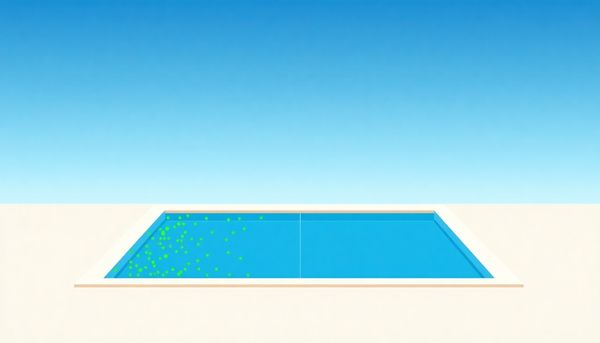
When your pool water seems a tad hazy, but you're not facing a murky swamp, reaching for a pool clarifier can be your best bet. Mild cloudiness is often caused by tiny particles—like dust, pollen, or oils—that evade the grasp of your pool’s filter. Here’s where clarifiers shine. They act like a matchmaker at a grand ball, uniting these rogue particles into larger clumps that are no longer able to slip through the filter's grasp.
A personal anecdote to consider: last summer, after a particularly windy weekend filled with backyard barbecues, my pool water took on a slightly milky hue. Instead of panicking, I opted for a clarifier. A few days of patience and constant filter operation later, the water sparkled like a gem. This solution felt almost magical and required minimal effort on my part.
Using clarifiers is straightforward, but timing and preparation are key. Begin by ensuring your pool water's pH and alkalinity are balanced; these chemicals work best under specific conditions. Next, remove large debris, brush the walls, and vacuum the pool to prepare the water for treatment. With the clarifier at work, keep your filter running continuously. Unlike flocculants, which work faster but demand manual labor to remove clumped debris, clarifiers take a bit longer but require less direct intervention.
Remember, clarifiers are ideal for those not battling severe cloudiness or urgent timelines. They are a gentle, gradual approach to restoring the clarity your pool deserves.
Determining the severity of your pool's cloudiness plays a crucial role in deciding whether a clarifier or flocculant is your best bet. It's a bit like choosing the right tool for the job—some situations call for a gentle nudge, while others demand a more robust approach.
When you glance into the pool and see a subtle haze, akin to a fine mist hovering just beneath the surface, a clarifier is your go-to remedy. This product excels in cases of mild cloudiness, where fine particles and contaminants merely need a helping hand to clump together for easier filtration. On a warm summer afternoon, I found this approach to be a savior when a gentle breeze had swirled a bit of dust into the pool, leaving it slightly less inviting but far from a swampy mess.
Conversely, if you peer into your water and see murkiness that obscures the bottom and makes you question what might be lurking below, it's time to reach for a flocculant. This is the option for more severe cases, where particles are plentiful and need to be corralled quickly. Think of it like the difference between sweeping the kitchen floor and calling in a professional cleaner for a post-party disaster.
In essence, understand your pool’s current state. A clear assessment ensures you choose the right product, keeping your pool a refreshing sanctuary rather than a murky mystery.
Preparing your pool for clarifier involves more than just pouring a solution into the water; it's about setting the stage for clarity. Start by removing any noticeable debris using a skimmer net. A clean surface allows the clarifier to focus on the finer particles causing cloudiness. After clearing the surface, grab a stiff pool brush and give the walls a thorough scrub. This not only dislodges any clinging particles but also prevents algae and grime build-up.
Testing the water is your next crucial step. Use test strips or a liquid test kit to check the pH and alkalinity levels, ensuring they are within the 7.4 to 7.6 and 100 to 150 ppm ranges, respectively. Balanced water chemistry enhances the clarifier's effectiveness. If the pH is off, adjust it before proceeding. Should you discover any algae presence, administer a shock treatment beforehand, as clarifiers are ineffective against algae.
Once the water is balanced and algae-free, you can introduce the clarifier. Follow the manufacturer’s dosage recommendations precisely, calculating your pool’s volume if needed. Now, the waiting game begins—run your filter continuously over the next few days. This step is critical, as your filter works in tandem with the clarifier to capture coagulated particles.
Remember, patience is key. To aid circulation, angle your return jets downward at 45 degrees, ensuring the water and particles are effectively mixed and processed. After a few days, your pool should transform into a clear oasis, ready for summer fun.
Balancing the chemistry of your pool water is akin to tuning a musical instrument; it requires precision and attention to detail to achieve harmony. Just as you wouldn’t expect a piano to stay in tune without regular adjustments, a pool left unchecked can quickly descend into murkiness. The secret to maintaining crystal-clear water often lies within the fine balance of pH, alkalinity, and chlorine levels.
When I first started maintaining my home pool, I learned the hard way that a slight oversight in water chemistry could lead to a cloudy mess. I realized that pH levels should sit comfortably between 7.4 and 7.6, while alkalinity should hover between 100 and 150 ppm. This balance ensures that pool clarifiers can perform their magic effectively, corralling small particles together so they can be filtered out with ease.
Chlorine, too, plays its part in this delicate dance. It’s essential to keep it within the ideal range to combat bacteria and other contaminants. If chlorine levels fall too low, it can lead to algae blooms, necessitating more than just a clarifier to fix the problem. Shock treatments are your best friend here; they reset your pool's chemistry, preparing it for a clarifier to do its job.
Ultimately, by keeping a vigilant eye on these chemical levels, you arm your pool with the best defense against cloudiness, ensuring that a clarifier can work its wonders and leave your pool water shimmering like a summer dream.
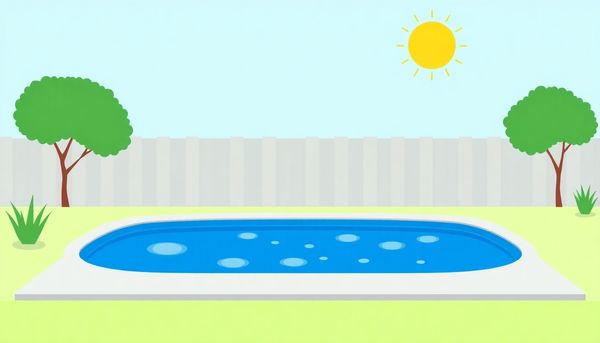
On a sunny afternoon, the allure of a sparkling pool is irresistible, yet sometimes that inviting blue turns into a murky mystery. Enter the trusty pool clarifier, a veritable hero for mildly cloudy waters. This clever concoction tackles the dilemma by binding minuscule particles that float in your pool, transforming them into larger clumps that your filter can easily capture and eliminate. Unlike pool flocculants, which create larger clusters that settle at the bottom, requiring manual removal, clarifiers are more about teamwork with your filtration system.
Take a moment to think of the clarifier as a pool’s matchmaker, helping tiny debris find each other and form clusters that are manageable for your filter. The real magic happens as the filter runs continuously, capturing these clumps and gradually restoring your pool’s clarity. Patience is key with a clarifier; while not as swift as a flocculant, it is less labor-intensive and better suited for ongoing maintenance rather than emergency clean-ups.
Using a clarifier involves a simple routine: ensure your pool chemistry is balanced—with pH levels ideally between 7.4 and 7.6—and run your filter non-stop while the clarifier does its job. Avoid introducing it to a pool plagued by algae before treating the algae, as no clarifier will fix what requires a different chemical battle. With consistent use, a clarifier can be your pool's best ally in keeping waters invitingly clear.
Selecting the perfect pool clarifier hinges on understanding your pool’s specific needs and conditions. I recall a summer when my friend’s pool turned a milky shade just days before a planned gathering. The panic was real, but the solution lay in choosing the right clarifier. Before adding any product, assess the pool's clarity and the cause behind the cloudiness. If your pool exhibits only mild cloudiness after a party or due to light debris, a clarifier is your ally. It gently coalesces the tiny particles, allowing the filter to handle the rest over a couple of days.
However, if time isn't on your side and you need quick results, consider the type of filter you have. D.E. filters, for instance, can expedite the clearing process due to their fine filtration capabilities. Sand and cartridge filters might require a bit more patience. Always ensure the pool’s chemical balance is optimal before adding any clarifier, as it works best in well-balanced conditions.
Keep in mind the pool’s size and follow the manufacturer’s instructions accurately. Overuse can lead to more complications, such as murkiness or even interference with other pool chemicals. Regular maintenance is crucial to avoid recurring cloudiness. With the right clarifier, your pool will return to its inviting, clear blue state, perfect for any occasion.
Ensuring your pool is ready for a clarifier treatment is akin to setting the stage for a show—every element must be in place for the performance to shine. Begin by surveying your pool for any visible debris. A trusty skimmer net will quickly become your best friend here, as it helps you fish out leaves and bugs that could interfere with the clarifier’s effectiveness.
Next, grab your pool brush and work on those walls. A good scrub will dislodge any clinging dirt or algae, making it easier for the clarifier to do its job. Don't skip this step; it's like prepping a canvas before painting. Once the walls are gleaming, deploy your vacuum to ensure the pool floor is squeaky clean.
Water chemistry plays a starring role in this process. Use test strips or a liquid test kit to check your pool's pH and alkalinity levels. Keep your pH between 7.4 and 7.6, and aim for an alkalinity of 100 to 150 ppm. If algae or chloramines are present, a pool shock is your next move. This cleansing act is crucial for a successful clarifier application.
Finally, ensure your filter is up to the task. Whether you have a sand, cartridge, or D.E. filter, make sure it's clean and running optimally. Good water circulation, achieved by adjusting return jets and ensuring main drains are operational, will maximize the clarifier’s efficiency, setting the stage for your pool’s clear water debut.
Balanced pool chemistry is like the unsung hero of crystal-clear water. It ensures that pool clarifiers can do their job effectively, transforming your cloudy pool into a sparkling oasis. Imagine a friend trying to organize a party, only to find that the venue is in complete disarray. No matter how good the entertainment, without a tidy space, the party won't be a success. Similarly, if your pool's chemistry isn’t balanced, clarifiers can’t perform their magic.
Begin by checking the pH level, aiming for a range between 7.4 and 7.6, and ensure your alkalinity is within 100 to 150 ppm. These parameters create an ideal environment for clarifiers to clump together those pesky particles that cloud your water. Regular testing with a reliable test kit will keep you informed and ready to make the necessary adjustments.
One summer, I remember my own pool turning into a murky mess after a storm. It took a few frustrating days of monitoring and adjusting pH levels before the clarifier could finally start working its wonders. That experience was a clear reminder of how essential balanced chemistry is—not just for aesthetics, but for overall pool health.
In short, maintaining balanced pool chemistry is not just a step in the process; it’s the foundation upon which all other cleaning efforts depend. Once the chemical balance is right, your pool clarifier will have the support it needs to transform cloudy waters into a refreshing retreat.
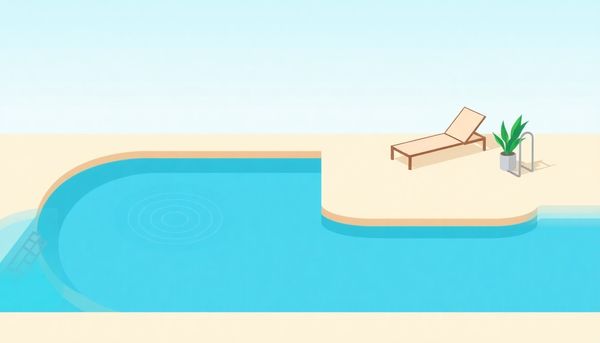
Standing at the edge of a pool, observing the water's clarity, can often feel like looking into a crystal ball—sometimes it's clear, and other times, hazy. The tools of the trade for managing this clarity are pool clarifiers and flocculants, each with its own distinct role.
Clarifiers are the gentle, patient workers in the pool maintenance world. They gather the microscopic particles that cloud the water, forming clusters large enough for your pool filter to manage. This process may take a couple of days, but it's simple and less labor-intensive. Ideal for mildly cloudy waters, clarifiers allow you to keep using the pool while they work their magic.
In contrast, flocculants are the heavy lifters. When time is of the essence or the murkiness has gone too far, flocculants step in. They rapidly bind the particles into sizeable clumps that promptly sink to the pool bottom. The catch? You'll need to manually vacuum these clumps out, bypassing the filter to avoid clogging. This method requires more effort but delivers faster results, making it perfect for urgent situations or opening a pool after winter.
Choosing between these two depends on your pool's condition and your urgency level. For a gentle nudge back to clarity, reach for the clarifier. When facing a murky emergency, flocculant is your go-to, albeit with a bit more elbow grease involved.
Navigating the maze of pool maintenance can feel overwhelming, especially when choosing between pool clarifier and flocculant. Each has its own role, and knowing when to employ which can save both time and effort. Imagine your pool's clarity as a puzzle, with each piece representing a different solution.
Pool clarifier acts like a gentle hand, coaxing tiny particles to gather and form larger clusters. These clusters are then easily caught by your pool's filter. It's the go-to option for mildly cloudy water, where patience is your ally. You add the clarifier, let the filter do its magic, and in a couple of days, your pool gleams under the sun. It's the perfect choice for those leisurely maintenance weekends, allowing you to sip lemonade while your pool gradually transforms.
Flocculant, however, is the sprinter in this race. When you need quick results, perhaps before a big summer bash, flocculant binds particles into heavy clumps that sink to the pool floor. It requires an active approach—manually vacuuming the sediment—and offers speedy results. This method demands more from you but rewards with almost instant clarity.
So, how do you decide? Consider the current state of your pool water and your timeline. If you're in no hurry and enjoy a low-maintenance approach, the clarifier is your friend. For urgent clarity, roll up your sleeves and opt for flocculant. Understanding these nuances not only simplifies pool care but ensures that every swim is a refreshing escape.
While sitting by the pool, gazing at its surface, there's a certain satisfaction that comes from seeing crystal-clear water. Achieving this with a pool clarifier is not just about pouring in a solution but about understanding the intricate dance between chemistry and mechanics. The first step is recognizing the specific issues your pool faces. If cloudiness is mild and not caused by algae, a clarifier might just be your best ally.
Start by giving your pool a quick clean-up. Skim the surface for any debris, and a thorough brushing of the walls can work wonders. This helps the clarifier unite those stubborn small particles into larger clumps, ready for your filter to tackle. Adjust your pool's pH levels, ensuring they're between 7.4 and 7.6, and check alkalinity too. These parameters ensure that the clarifier can perform optimally.
Once your pool is prepped, add the clarifier. Precision matters, so calculate the exact amount needed based on your pool's volume—there are handy calculators online to assist with this. Keep that filter running continuously; this machinery is the unsung hero in the cleanup operation. Depending on your filter type, the time it takes to achieve that sparkling finish varies. D.E. filters are the quickest, sand filters the slowest, but with patience, all will yield results. After a few days, your pool should greet you with clarity, inviting you for a refreshing swim.
Not every cloud floating in your pool’s water can be chased away by a clarifier alone. Sometimes, the real culprits lurk beneath the surface. There's often more to cloudy water than what meets the eye, and addressing these underlying issues can spell the difference between temporary relief and long-lasting clarity.
Start by examining your filtration system. Even the most effective pool clarifier won't make a difference if your filter is underperforming. Picture a dusty bookshelf: a mere dust cloth isn't enough if you're not addressing the root cause of the dust. Whether you're using a sand, cartridge, or D.E. filter, ensure it's clean and working efficiently. Regular maintenance, like backwashing or replacing cartridges, is crucial in maintaining a clean pool.
Moreover, water balance plays a pivotal role. High pH, alkalinity imbalances, or calcium hardness can significantly affect your pool's clarity. Investing in a reliable test kit and maintaining balanced chemistry not only supports the clarifier's work but also prevents cloudiness from recurring. Often, fixing these issues can resolve cloudiness without needing to add extra chemicals.
Finally, don’t ignore the signs of algae or other organic contaminants. If your pool has a greenish tint or slimy feel, algae might be the real villain. Before pouring in a clarifier, tackle these issues head-on—shocking the pool to kill algae is a wise first step. By addressing these underlying problems, you ensure your pool stays invitingly clear, shimmering under the sun for everyone to enjoy.
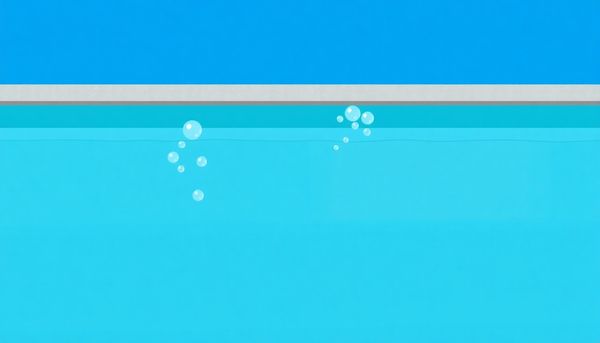
Swirling under the summer sun, a cloudy pool can turn an anticipated swim into a disappointing splash. Pool clarifiers, those unsung heroes of clear water, offer a gentle route back to pristine conditions. Before diving into the clarifier process, address your pool’s water balance. Use a test kit to ensure pH floats between 7.4 and 7.6, while alkalinity remains steady at 100 to 150 ppm. Only after this should you venture into the clarifier application.
Once your water chemistry is in harmony, it's time to prep your pool for the clarifier. Skim the surface to remove any large debris and scrub the walls thoroughly. This ensures that the clarifier can effectively bind to those microscopic particles causing the cloudiness. If algae is lurking in your pool, a chlorine shock is mandatory. Dissolve it overnight and retest your water before proceeding.
With a clear path set, introduce the clarifier. Measure precisely according to your pool's volume—overuse can backfire, increasing murkiness. Keep your filter running tirelessly, 24/7 if possible, to aid the clarifier in its mission. Depending on your filter type, results may vary. D.E. filters offer the quickest clarity, while sand filters may take their time. After two or three days, your efforts should be rewarded with crystal-clear water. Finally, clean your filter and double-check water chemistry, ready to bask in the restored clarity of your oasis.
Choosing the right solution for your pool’s cloudiness can feel like navigating through a fog—pun intended. The suitability of pool clarifier depends not only on the type of murkiness you’re facing but also on the timeline and effort you're willing to invest. A clarifier works wonders in pools with mild cloudiness, where the particles are tiny enough to evade filters but not so numerous that they overwhelm the system. This method offers a slower, steady approach, allowing your filter to do the heavy lifting over several days without requiring manual intervention.
However, a clarifier isn’t the knight in shining armor for every situation. If your pool resembles a swamp more than a serene oasis, with visible debris floating and algae lurking in corners, a clarifier might struggle to keep up. In such cases, a more aggressive approach, like using a flocculant, might be required. Flocculants work faster, gathering particles into larger clumps that sink to the bottom for easy vacuuming. This is ideal when hosting a weekend pool party and time is of the essence, but be prepared for the additional effort involved in manually removing the sediment.
In summary, assess your pool’s clarity needs and maintenance capacity. For routine upkeep and gradual results, a clarifier is a reliable companion. For more immediate, hands-on solutions, consider the robust flocculant. Choosing wisely ensures your pool remains a crystal-clear retreat, reflecting your care and expertise.
Before unleashing the power of pool clarifier, the key to success lies in meticulous preparation. Begin by skimming the surface to remove any floating leaves or debris. This simple act ensures the clarifier can focus on the microscopic particles that escape the naked eye. Next, arm yourself with a trusty pool brush and give the walls a thorough scrub, dislodging any dirt or algae clinging stubbornly to the surfaces.
Water testing follows on your prep checklist. Utilize test strips or a liquid kit to gauge the pH and alkalinity levels, aiming for a pH between 7.4 and 7.6 and alkalinity around 100 to 150 ppm. These parameters are crucial, as imbalances can hinder the clarifier's efficacy. If algae have made an unwelcome appearance, a pool shock treatment is your ally. This boosts chlorine levels, effectively eradicating these unwanted guests before the clarifier steps in to do its job.
With the pool’s chemistry in check, turn your attention to circulation. Ensuring your pool’s water is well-circulated is paramount. Adjust the return jets downward at a 45-degree angle, promoting even distribution of the clarifier. If your pool boasts a main drain, ensure it’s operational; if not, a manual vacuum can simulate this effect.
Once these foundational steps are in place, add the recommended dosage of clarifier, keeping your filter running non-stop. With patience and persistence, your pool will soon gleam with clarity, a testament to your diligent preparation and the clarifier’s subtle, yet powerful magic.
Every pool enthusiast knows that a sparkling pool isn't just about aesthetics; it's about proper water chemistry. Balancing your pool's chemistry is like tuning an orchestra—each element must be in harmony to create a perfect symphony. Before reaching for a pool clarifier, understanding your water's chemistry is essential. The key players in this balancing act are pH, alkalinity, and chlorine levels. Each plays a crucial role in maintaining clear water and ensuring the effectiveness of any clarifier you might use.
Imagine you've just stocked up on pool clarifier, but your pH levels are off. Instead of crystal-clear water, you end up with a murky mess. This is because the clarifier's efficacy is compromised when pH isn't balanced. Keep your pH between 7.4 and 7.6 for optimal results. Alkalinity, serving as the pH's guardian, should hover between 100 and 150 ppm, preventing drastic fluctuations. Meanwhile, chlorine levels must be sufficient to combat bacteria and algae—otherwise, even the best clarifier will struggle.
Regular testing is your best friend. It allows you to make necessary adjustments, ensuring that when you do use a clarifier, it works like magic. Consider it a routine check-up, much like taking your car in for maintenance. With balanced water chemistry, your clarifier can perform its task with finesse, transforming your pool into an inviting oasis. Embrace this routine, and the clarity of your pool will reward you.

Imagine a sunlit afternoon spent lounging by the pool, only to glance at the water and find it clouded and dull. This scenario can be remedied with the strategic use of a pool clarifier, an unsung hero that bolsters your filtration system's effectiveness. Clarifiers bind together those pesky microscopic particles that elude your filter, transforming them into larger clusters that your filtration system can capture with ease. This process not only clears the water but also enhances the efficiency of your pool filter.
To maximize the clarifier's potential, it's essential to ensure your filtration system is in peak condition. Different filters offer varying speeds and effectiveness. For instance, Diatomaceous Earth (D.E.) filters are renowned for their superior ability to clear up cloudy water quickly, while cartridge and sand filters, though reliable, might take longer. Regular maintenance, such as cleaning or backwashing the filters, ensures they operate optimally, allowing the clarifier to do its job effectively.
Beyond equipment, water circulation plays a pivotal role. Adjusting the direction of your pool's return jets to a 45-degree angle helps keep the pool's water moving, promoting thorough mixing and distribution of the clarifier. With everything in sync, from chemical balance to filter functionality, the clarifier works its magic, turning your pool into a pristine oasis once more.
Choosing the right method to clear up your pool can feel like navigating a maze, especially when you're caught between using a clarifier or flocculant. Each option suits different situations, and selecting the appropriate one hinges on understanding the specific needs of your pool.
For pools experiencing mild cloudiness without urgent time constraints, clarifiers are a gentle yet effective choice. They work by binding small particles together, forming larger clumps that your filter can easily catch. This process, although slower than using a flocculant, is less labor-intensive, making it ideal for those who prefer a more hands-off approach. A friend of mine swears by clarifiers for her saltwater pool, especially during the summer months when the water’s turbidity tends to increase slightly after pool parties.
On the flip side, if your pool resembles a milkshake more than a crystal-clear oasis, flocculant is your best bet. It acts swiftly, gathering particles into larger masses that sink to the bottom. This method requires manual vacuuming, bypassing the filter, which can be a bit more demanding in terms of effort. However, the results are undeniably rapid and satisfying, particularly when time is of the essence, such as before an event.
Ultimately, understanding your pool's condition and your willingness to engage in maintenance will guide you to the right choice. Whether you opt for the slow and steady clarifier or the fast-acting flocculant, each method has its place in achieving pristine pool water.
Mornings by the pool are a perfect time to plan your strategy for crystal-clear water. Often, the key to maximizing the efficiency of your pool clarifier lies in optimizing your filtration setup. While a clarifier works by clumping together the minuscule particles into more substantial ones that are easier for your filter to catch, the type and maintenance of your filtration system significantly affect how swiftly you see results.
Maintaining your filter is crucial. Whether you have a sand, cartridge, or D.E. filter, each has its pros and cons regarding speed and efficiency. D.E. filters, for instance, provide the finest filtration, capturing even smaller particles and clearing up water more rapidly than their counterparts. On the other hand, sand filters might take a bit longer, but with regular backwashing and maintenance, they can still do the job well.
Another aspect to consider is the circulation in your pool. Directing the return jets at a 45° angle can enhance water movement, pushing the cloudy water towards the filtration system more effectively. If your pool lacks a main drain, creatively using a manual vacuum flipped upside down can simulate this effect, drawing debris from the depths.
In essence, a well-maintained and optimized filtration system, coupled with proper water circulation, can transform the clarifier from a slow worker into a speedy assistant, ensuring your pool sparkles in no time.
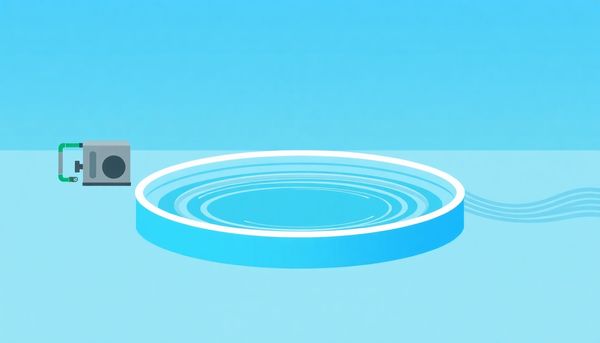
This article provided insights into maintaining your pool. Start your pool care journey today!
Want to become a pool maintenance expert? Our free Pool School course covers everything you need to know about pool care. From basic maintenance to advanced troubleshooting, you'll learn how to:
Join over 10,000 pool owners who have already transformed their pool care routine. Get started with our free Pool School course today!